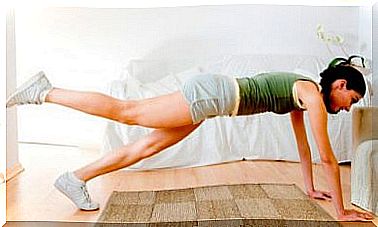Acoustic Insulation – How To Do It At Home?

Sound insulation refers to preventing sound from reaching a place. It means reducing noise in a specific area, isolated with different materials.
Noise is a common problem everywhere. In fact, noise pollution exists to a greater extent in urban areas. Whether it’s because of your neighbor, the noise on the street, the sound of machines, or because you don’t want to hear what is happening in your room, you may be wondering how to make your home quiet.
Acoustic insulation would solve this problem. But do you know how to make it yourself at home?
Before we start, we’ll explain that there are home-made acoustic insulators and conditioners, but they are two different techniques that are used for a different purpose. Conditioning the place from an acoustical point of view serves to ensure that the sound sounds good in the room.
Sound insulation and materials available on the market
Acoustic insulators are materials that reduce noise coming to the room from the outside.
The sound is transmitted by vibrations that move through the air. Sound waves travel and collide with some kind of barrier, which prevents sound from entering space. This can be achieved by absorbing sound or reducing noise.
Noise reduction can be achieved by placing space between the walls of the rooms, allowing the sound more space to diffuse.
However, in the case of noise absorption, it is about damping it. The energy of the sound wave is converted into heat in the insulation layer, thus suppressing echoes and reverberation. By reverberation we mean the reflection of sound in a room.

Sound insulation made of foam rubber in the shape of a pyramid
This type of insulation is used in recording studios and theaters. These are foam boards of different density and thickness. You need to determine the parameters of the board you need, depending on the place you want to become soundproofed. The role of this board is to absorb noise and prevent reverberation.
Particle foam board
It is a foam agglomerate that can be used to reduce noise coming from any direction. These are acoustic foam boards that can be placed on ceilings and walls.
They also have a thermal insulation function. They come in various thicknesses and densities.
Aluminum insulators
Aluminum is a highly conductive material, so in addition to being an acoustic insulator, it also serves as thermal insulation. It consists of several layers of aluminum and polyethylene, although it may also contain polyester.
Mineral wool
The mineral wool panel has an insulating core and two rigid outer layers. The material comes from volcanic rock. It provides thermal insulation, acoustic and flame retardant properties and prevents the growth of microorganisms.
Fiberglass
Glass fiber consists of silica sand, sodium carbonate and limestone. These materials are heated up to 1500 degrees Celsius. It is at this temperature that fibers appear that intertwine to form the structure of this material.
As an acoustic insulator, it helps to reduce air noise, reverberation, sound coming from outside and that produced in the home.
Soundproof paint
It is a type of paint that can be used on any surface that can be used with regular paint. However, it only insulates at a noise level of up to 52 decibels, although you should ask the seller what parameters the purchased unit has.
Sound insulation you can do at home
If you don’t have enough budget to do rock wool installation work, there are a few tricks you can use to stop the noise. You will find that home sound insulation can have a surprisingly good effect.
We will do everything according to the principle that the thicker the material, the better it will insulate. What we will actually be concerned with is erecting acoustic barriers or structures that act as sound attenuating devices.
Carpets, curtains and tapestries
It’s an easy way to isolate your home from noise. You can lay a very thick carpet that will serve as an obstacle so that the sound does not penetrate and reflect off the floor.
Curtains and drapes made of thick materials such as velvet, heavy linen and corduroy will also help. It is a cheap and quite effective way if you live in a block of flats and the neighbor downstairs makes a lot of noise.
Book shelves
Another inexpensive way to reduce noise is to place shelves with the back wall against the walls. If you put books on them, they will muffle the sound. You can also put cabinets or furniture on the walls. Mirrors and paintings can also be barriers.
Adaptation of windows
Windows are exceptionally good sound conductors. In fact, they even generate noise through their own vibrations. This is usually a common problem in homes located in urban areas.
It is recommended to replace them with windows with greater acoustic efficiency or the use of double glazing. Flexible brackets can be placed on the frame to avoid vibrations.
In addition, there are several options for silencing windows with home methods. The first is to use a heavy curtain as a barrier.
You should also pay attention to cracks and joints that can be sealed with polyurethane foam or silicone, if the gap is small. Perform this step first from the outside of the window and then from the inside. If there are joints in the glass, they must be sealed with rubber gaskets.

Suspended ceiling
A false ceiling is a structure that is installed 10 centimeters from the actual ceiling to create an air chamber that absorbs noise. Installation is usually not that expensive; all this is a question of allocating certain resources.
Home sound insulation can give you peace of mind
Remember that how effectively you isolate yourself from noise will depend on the thickness of the materials used. So using egg cartons as soundproofing material is a myth as it is a very thin structure that will not serve the purpose.
To carry out any remodeling in your home, it’s best to find a trusted construction professional. Meanwhile, you can resort to little tricks that will save you a little penny.
In some cases, it is enough to test and see if it’s really the right solution. But it is worth the effort to sleep, work, or study in peace.









